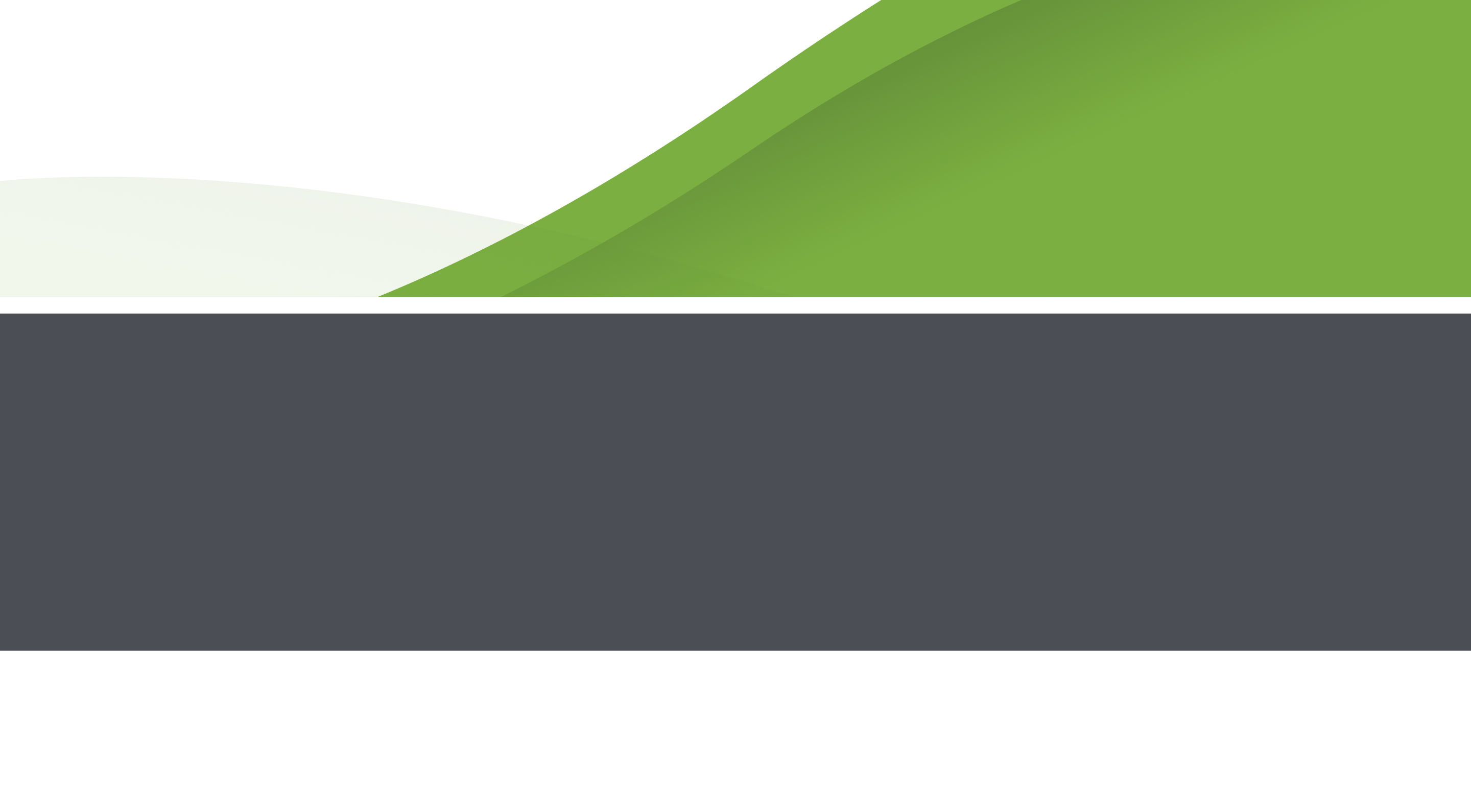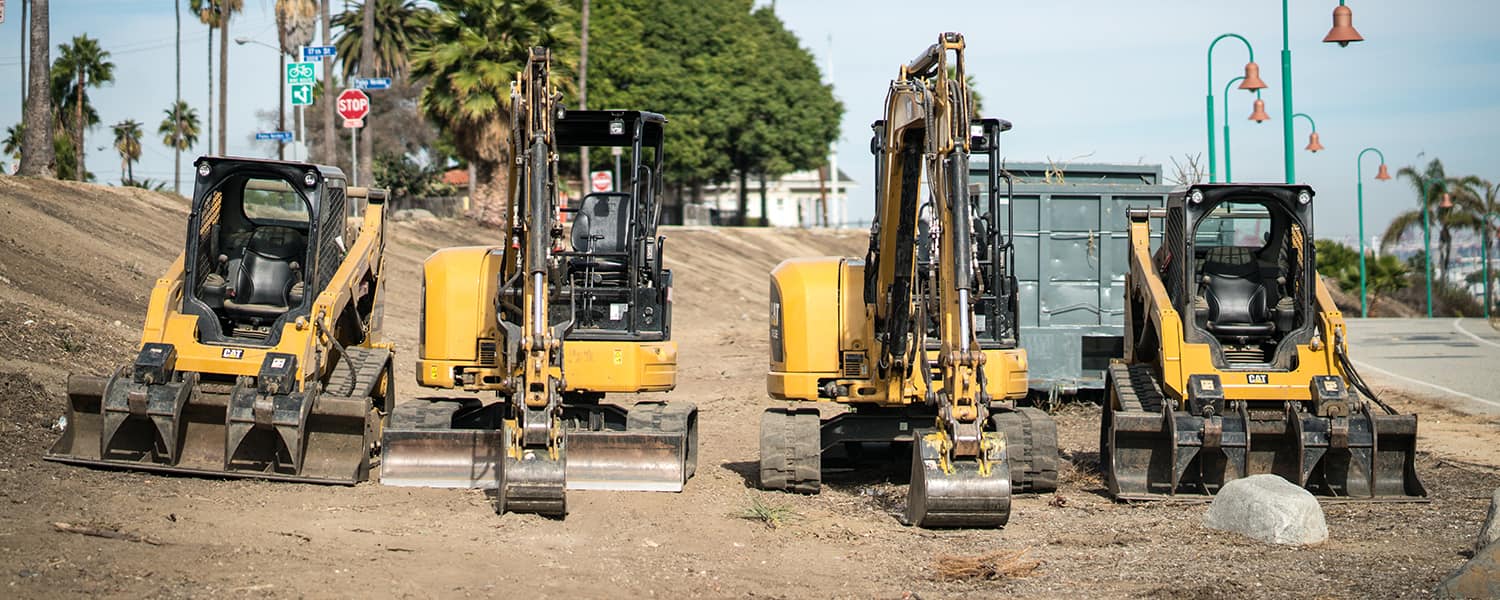So you’ve made the decision to buy landscaping equipment for your business. You know what kind of equipment you need, which brands you like, but you’re stuck on deciding if your landscape business is purchasing new or used equipment. No matter what, this is an important investment into your business and you need to make sure your cash flow situation is prepared to take on the cost.
There’s no right or wrong answer with New or Used equipment, but there’s definite pros and cons between the two. We’ll check out what those pros and cons are with New and Used landscaping equipment to help your business make the most informed decision.
The Pros & Cons of Buying USED Landscape Equipment
Pros – Used Landscaping Equipment
The Price is Right
Landscape equipment is both essential and expensive, so when money’s tight, it pays to purchase far less costly used equipment. If you can find a good deal on reliable equipment at a great price point, your bank account will thank you. It’s also important to know that equipment depreciates in value fastest during its first few years, so you won’t be worrying about the depreciating value of your used landscaping equipment.
Protection for Pre-Owned
Used landscaping equipment doesn’t have to mean ‘unreliable’. If you’re concerned about buying a bad piece of equipment, shop from a trusted source. Some suppliers offer certified used equipment that guarantees a thorough inspection, product support and an extended warranty. The extra cost is worth the peace of mind.
Bigger Fleet for Less Budget
It’s simple: The money you’ll save on equipment will leave room in your budget to buy more if needed. Building a reliable roster of equipment lets your business take on more landscape work. With properly equipped crews, your business will complete jobs faster and more efficiently which will give more time to win jobs.
Cons – Used Landscaping Equipment
Unknown suppliers
Anyone can sell equipment. There are no credentials, mandatory inspections or certifications, so there’s a good chance used landscaping equipment is going to come with problems. Even if you ask the owner, you really can’t be 100% certain how the equipment was operated, inspected or maintained. Unless you trust the seller, you’re making a significant investment based solely on a handshake.
Outdated Equipment in Poor Condition
Most used landscape equipment is outdated. Unless you luck into an owner going out of business, most of your used options will be older models. Wear and tear due to years of use will affect the condition of your newly purchased used equipment and increase the likelihood for costly repairs–perhaps much earlier than you anticipated. Landscape businesses need to make sure they have the cash on hand for those untimely repairs or outright replacements.
No Warranty
When you’re purchasing privately from an unknown supplier, chances are you’re ‘taking their word for it’, trusting there’s no hidden damage. The lack of warranty puts your equipment and your business at risk. When purchasing from a dealer, it pays to try and negotiate some level of warranty into your purchase agreement to help protect your investment.
Negative Appearance
Looks matter! If your trucks and equipment are scratched up, sound like they’re dying, and generally look like they belong in the junkyard, imagine the impression people will have of your business. Don’t be surprised when prospective customers judge the quality of your work based on the quality of your equipment. People want work done by businesses that care about their own personal image, especially when it comes to residential services.
The Risk for LOST REVENUE
Used equipment will break down. If you’re relying on a major piece of equipment for your business to stay efficient and it breaks down in the middle of a job, you’re instantly wasting money every minute you wait for repairs to happen. The biggest form of waste is waiting, and your business needs to make sure it has a backup plan for when the used piece of equipment finally breaks down.
Best Practices for Buying Used Landscape Equipment
If you decide that purchasing used equipment is your best bet, follow these best practices before you commit.
Question the owner:
- Were they the first owner?
- What was the equipment used for?
- Why are they selling it?
- Were they impressed with the machine’s performance?
Have a reputable mechanic inspect the equipment before you purchase it. This extra step could save you from making a costly mistake.
Ask for an equipment or vehicle inspection report and/or a documented maintenance history.
Spend a little extra for equipment that looks clean and well-cared for or have a plan to give it a makeover once it gets to the shop.
The Pros & Cons of Buying NEW Landscape Equipment
Pros – New Landscaping Equipment
Increased Productivity
When you’re buying new, you’re ideally getting the latest and greatest in equipment. It should have the most up-to-date features and functionality, enhancing your crew’s productivity. With the improved efficiency afforded by new equipment, jobs will get done faster and you’ll be able to say ‘Yes’ to more work.
Minimal Breakdowns
Your new equipment shouldn’t break down anytime soon after the purchase. The cost of breakdowns can cripple a business. It’s not just the actual repair costs you have to worry about but the costs related to lost productivity, sales opportunities and customer satisfaction. New equipment brings peace of mind, and spending that extra bit on new equipment can go a long way.
Enhanced Professionalism
You really don’t get a second chance to make a first impression. Relatively new, clean and recently painted trucks and equipment are excellent promotion for your company and show excellent branding. If you want to win the big jobs, it’s critical that you convey a professional image that builds customer confidence in your brand.
Complete Ownership
As the first owner of your equipment, you don’t have to wonder about the equipment’s history or its current state. By purchasing your equipment vs. leasing, you’ll have no agreements, lengthy negotiations or contracts to sign. Plus, you’ll have no mandatory maintenance schedule to follow as TLC will be up to you.
Cons – New Landscaping Equipment
Delivery Delays
In the construction and landscaping industries, the supply of manufactured power equipment doesn’t always meet the demand. Backordered equipment may mean long wait times. And when you need that new machinery ‘yesterday’, lengthy delays could be costly in terms of productivity and missed sales. If your business is stuck waiting, here’s to hoping your business can absorb the cost of waiting around wasting time and money.
Budget
When you buy a new piece of machinery, you’re either paying the full cost up front or taking out a hefty bank loan. Either way, the high cost of new landscape equipment means you may have to hold off on other purchases or even slow down on hiring more landscape crew members. Add unexpected expenses and you could have a serious cash flow situation on your hands.
We have built a helpful calculator to estimate the lifetime cost of equipment, based on interest rate, purchase price, annual fuel costs etc… And with those numbers, an estimated hourly rate/cost based on hours per year usage.
Best Practices for Buying NEW Landscape Equipment
Made the decision to buy new equipment? Before you get distracted by that ‘new equipment smell’, consider these best practices.
- Reference your budget. As an owner, you have a responsibility to ensure you’re a) allocating an amount to equipment spend in your annual budget and b) not overspending on new (or used!) equipment. Remember: Claim new equipment as a capital allowance for tax benefits!
- Confirm lead times with your sales representative. Before you place an order, ensure you’ll have access to your equipment when you need it.
- Consider current features and anticipate future needs before you commit to a purchase. Will your new equipment have the features you anticipate needing six months to a year from now? Or does it make sense to hold off for next year’s model?
- Focus on the big picture! While considering the expense, consider that equipment is an investment. The savings in labor, repair and downtime should be counted as well as the extra revenue that will be produced by improving your productivity.
In some cases, you may find a gently-used secondhand piece of landscaping equipment that will serve your company well. In other cases, you may realize it’s better to just ‘bite-the-bullet’ and purchase something new. Whether you decide to buy your equipment used or new, make sure you take the time to properly evaluate its impact on your bottom line. Choose wisely: Next to your people, equipment is the biggest investment you’ll make in your business.
Wishing you luck in making the right equipment decisions for your business.




